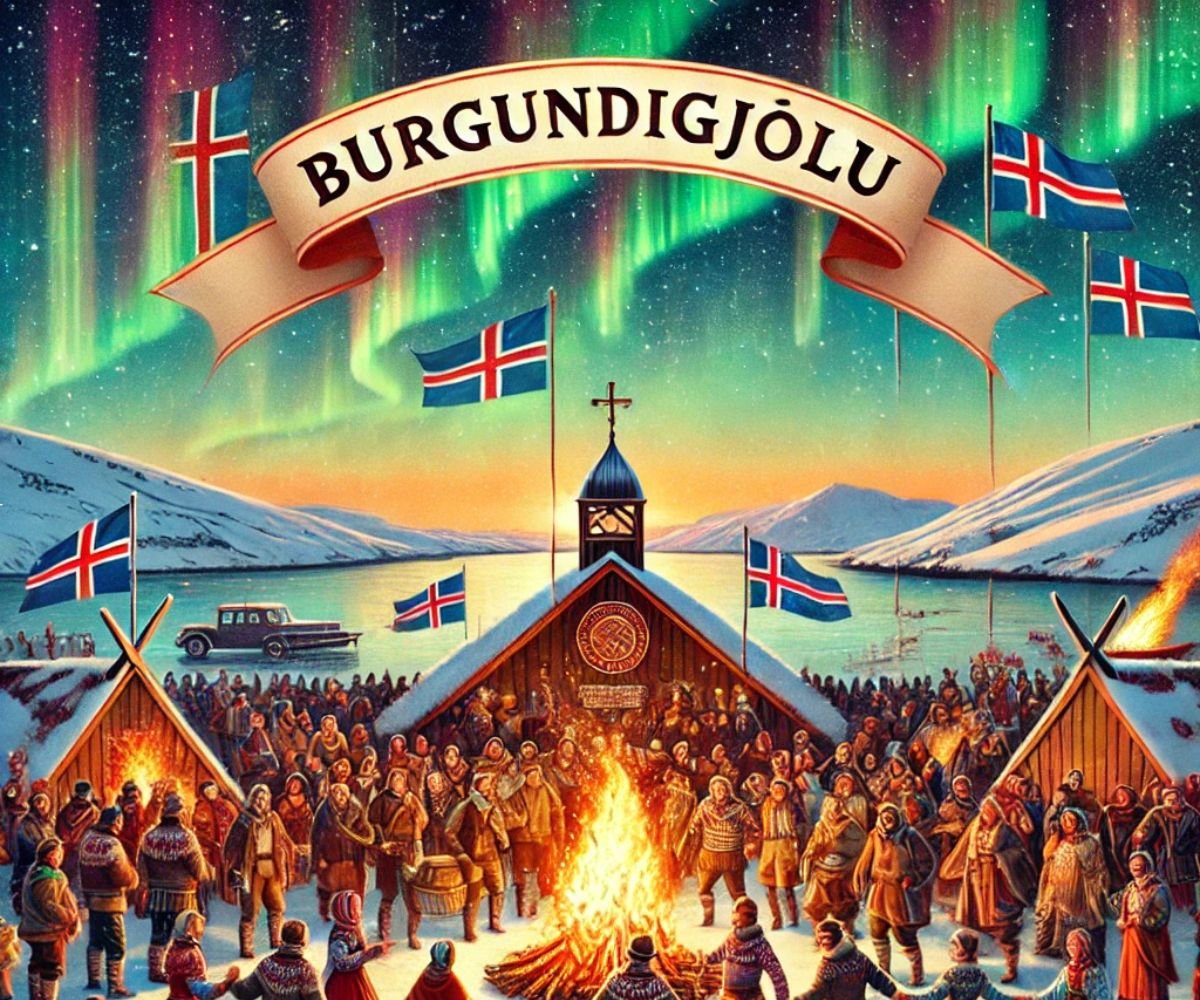Iceland is a land deeply intertwined with mythology, natural wonders, and rich cultural traditions. Among the lesser-known, yet fascinating, aspects of Icelandic culture is the festival of Burgundigjolu. This unique celebration, shrouded in mystery and folklore, holds a special place in the hearts of Icelanders, though it is relatively unknown outside the country’s borders.
In essence, Burgundigjolu blends ancient customs with the awe-inspiring backdrop of Iceland’s winter landscape. For those unfamiliar with the tradition, the festival brings to life Iceland’s connection to the supernatural, the natural world, and the marking of time. Let’s dive deeper into the captivating lore, customs, and history of Burgundigjolu, and explore why this festival remains a symbol of Icelandic resilience and joy during the dark winter months.
The Origins of Burgundigjolu
The festival of Burgundigjolu has roots in Icelandic paganism, dating back to the era before the island nation converted to Christianity. Though exact records of its founding are scarce, the word “burgundigjolu” is believed to derive from old Icelandic terms relating to “burgundy” and “yule,” suggesting an association with wine, feasting, and the midwinter celebration of the Yule season. In a land known for its lengthy winters, where the sun hardly rises during the solstice, festivals like this one brought light, warmth, and community.
While Icelanders today enjoy modern comforts, the festival preserves some of these ancient practices, offering an authentic glimpse into how Icelanders of old weathered the long, dark winter months. Burgundigjolu involves storytelling, feasting, music, and offerings to ancient gods, making it a bridge between Iceland’s Viking past and its modern-day love for folklore.
The Symbolism of Burgundigjolu
At the heart of Burgundigjolu lies a deep appreciation for Icelandic nature. As winter solstice approaches, marking the shortest day of the year, this festival symbolizes renewal and the coming of light. Traditionally, the festival was seen as a time when the barriers between the mortal world and the supernatural were at their thinnest. Spirits, elves, and other mystical creatures were believed to roam the land, blessing or haunting the villagers, depending on their behavior throughout the year.
Today, while the spiritual undertones have evolved, Burgundigjolu still reflects a deep respect for the unseen world. Many participants light candles to honor both their ancestors and the land’s spirits, drawing from the ancient belief that keeping the spirits happy would bring fortune for the upcoming year.
Traditional Burgundigjolu Festivities
The celebration of Burgundigjolu includes an array of activities, each rooted in the island’s unique history and folklore. One of the most important aspects of the festival is the community feast. Typically, a large communal meal is prepared, with Icelandic lamb, seafood, and even fermented foods making their way onto the table. These meals are more than just sustenance—they are a tribute to the harsh living conditions of early Icelanders and their ability to survive and thrive in the face of adversity.
During the feasts, families and communities come together to share stories passed down through generations. These stories often include legendary tales of trolls, elves, and huldufólk (the hidden people), further intertwining the celebration with Iceland’s magical lore. Guests are also encouraged to offer thanks to the elements—fire, ice, wind, and earth—symbolizing the natural forces that continue to shape Iceland.
Music and dance also play a significant role in Burgundigjolu. Traditional Icelandic instruments like the langspil (a stringed instrument) and the fídla (a type of fiddle) are often played during the celebration, accompanying traditional songs that recount the triumphs of Iceland’s ancestors. Folk dances are performed around bonfires, and the younger generations are encouraged to learn these dances to ensure the preservation of Iceland’s cultural heritage.
Burgundigjolu and Modern Iceland
Though Burgundigjolu is an ancient festival, it has seen a revival in modern times. Many Icelanders, particularly in rural areas, still observe the festival as a way to honor their ancestors and connect with their heritage. In recent years, it has become a more widely recognized part of Iceland’s winter traditions, celebrated alongside Christmas and New Year’s Eve.
Tourists who visit Iceland during the winter months may have the opportunity to witness or even participate in Burgundigjolu festivities. This celebration provides a unique cultural experience, far removed from the commercialized aspects of other winter holidays. Instead, it offers a more introspective and nature-centric view of the season, with a focus on gratitude, storytelling, and community bonding.
The festival has also become a source of artistic inspiration. Icelandic poets, musicians, and visual artists often create works that reflect the mystical and wintery themes of Burgundigjolu, ensuring that this ancient celebration remains relevant in the context of contemporary Icelandic culture.
FAQs
What is Burgundigjolu?
Burgundigjolu is an ancient Icelandic festival celebrating the winter solstice, blending pagan traditions, folklore, and community rituals to honor the natural world and mythical creatures.
How old is the Burgundigjolu festival?
The festival dates back to pre-Christian Iceland, rooted in pagan practices and Viking traditions. Though the exact age is unclear, it is believed to be over a thousand years old.
How do Icelanders celebrate Burgundigjolu today?
Modern celebrations include communal feasts, storytelling, music, and honoring Iceland’s natural elements. While some traditions have evolved, the core values of gratitude, community, and connection to the natural world remain.
Is Burgundigjolu connected to Christmas?
Though celebrated in December, Burgundigjolu is distinct from Christmas. It focuses on the winter solstice and Icelandic folklore, rather than Christian traditions. However, some elements may overlap due to the timing of the celebrations.
Can tourists participate in Burgundigjolu?
Yes, tourists in Iceland during the winter months may have the chance to observe or join in local celebrations of Burgundigjolu, particularly in rural communities where traditions are more robustly preserved.
Why is Burgundigjolu important to Icelandic culture?
Burgundigjolu is a symbol of Icelandic resilience, gratitude for nature, and cultural heritage. It connects modern Icelanders with their ancestors’ ways of life and serves as a reminder of the importance of community during harsh winters.
Conclusion
Burgundigjolu is much more than a festival—it’s a reflection of Iceland’s spirit, deeply rooted in both its natural environment and its storied past. As winter wraps the island in darkness, the festival serves as a beacon of light, reminding Icelanders and visitors alike of the enduring power of tradition, community, and the human connection to the land. Embracing the mystery and magic of Burgundigjolu offers a glimpse into a world where folklore comes alive, and the celebration of life persists despite the cold and dark.


